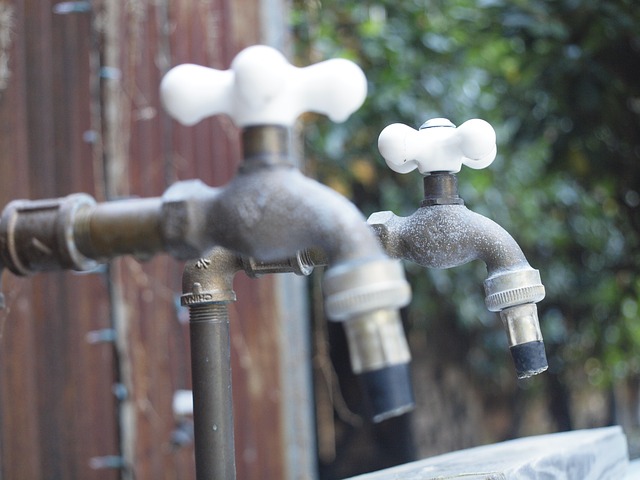Water hammer
Contents |
[edit] Introduction
Collins Complete Do-It-Yourself Manual was published in 1986. It was created for William Collins Sons & Co. Ltd. by Jackson Day and conceived by Jackson Day Jennings Ltd.
It defines the term water hammer as “a vibration in plumbing pipework produced by fluctuating water pressure.”
Water hammer is also known as fluid hammer or hydraulic shock.
[edit] History
One of the earliest recorded mentions of water hammer was in the 1st century BC. The occurrence is described by Vitruvius Pollio (born c. 80–70 BC, died after c. 15 BC) - often considered the first recognisable architect and known as a great Roman writer, engineer and builder. Amongst his accomplishments, Vitruvius documented the phenomenon - and proposed a resolution through the construction of cavities known as ‘venters’ - in his description of the pipes and tubes of the Roman public water supply.
The action created by water hammers was used in the development of a device known as a pulsation engine. Constructed in 1772 by the English clockmaker and scientist, John Whitehurst, the pulsation engine was the precursor to the hydraulic ram, or hydram, which used hydropower to pump water.
The hydraulic ram and the action of water hammers was used in 1796 by the French inventor Joseph Michel Montgolfier (1740–1810). Perhaps better known as the inventor of the Montgolfière-style hot air balloon (along with his brother, Jacques-Étienne Montgolfier), Montgolfier explored the idea of the pulsation engine and improved upon it to create the first self-acting ram pump. The Mongolfiers harnessed the ram pump to run their paper mill and refine a process to manufacture transparent paper.
It wasn’t until 1898 that the idea of water hammers was more formally explored in relation to civil engineering - first by the Russian, Nikolay Yegorovich Zhukovsky and the American, Joseph Palmer Frizell. In 1902, it was investigated again by the Italian engineer Lorenzo Allievi.
[edit] Causes
In certain situations, water hammers can be created when the flow of water is cut off from an appliance (such as a washing machine or dishwasher) or fixture (such as a toilet or shower). When the water flow resumes, it may be accompanied by a loud noise sometimes accompanied by a shudder - which may repeat several times or may happen just once. These actions indicate the transmission of a shock wave that travels back and forth.
Water hammers occur most frequently in older pipes. The shock wave associated with them may trigger the release of high pressure steam which can be dangerous - or even deadly. Their release can also create property damage if they rupture or cause pipes to collapse.
[edit] Preventing water hammers
It is sometimes possible to fix water hammers in a home without having to call in a professional plumber. The simplest method is to secure loose pipes, but if this doesn’t resolve the issue, additional methods - which may require a greater level of skill - can be attempted. These include:
- Installing an air chamber.
- Installing mechanical water shock arrestors or a hydropneumatic device known as a water hammer arrestor.
- Installing a water pressure regulator.
- Lowering fluid velocities.
- Fitting slowly closing, quiet valves or installing non-slam check valves.
[edit] Related articles on Designing Buildings
Featured articles and news
Ebenezer Howard: inventor of the garden city. Book review.
The Grenfell Tower fire, eight years on
A time to pause and reflect as Dubai tower block fire reported just before anniversary.
Airtightness Topic Guide BSRIA TG 27/2025
Explaining the basics of airtightness, what it is, why it's important, when it's required and how it's carried out.
Construction contract awards hit lowest point of 2025
Plummeting for second consecutive month, intensifying concerns for housing and infrastructure goals.
Understanding Mental Health in the Built Environment 2025
Examining the state of mental health in construction, shedding light on levels of stress, anxiety and depression.
The benefits of engaging with insulation manufacturers
When considering ground floor constructions.
Lighting Industry endorses Blueprint for Electrification
The Lighting Industry Association fully supports the ECA Blueprint as a timely, urgent call to action.
BSRIA Sentinel Clerk of Works Training Case Study
Strengthening expertise to enhance service delivery with integrated cutting-edge industry knowledge.
Impact report from the Supply Chain Sustainability School
Free sustainability skills, training and support delivered to thousands of UK companies to help cut carbon.
The Building Safety Forum at the Installershow 2025
With speakers confirmed for 24 June as part of Building Safety Week.
The UK’s largest air pollution campaign.
Future Homes Standard, now includes solar, but what else?
Will the new standard, due to in the Autumn, go far enough in terms of performance ?
BSRIA Briefing: Cleaner Air, Better tomorrow
A look back at issues relating to inside and outside air quality, discussed during the BSRIA briefing in 2023.
Restoring Abbotsford's hothouse
Bringing the writer Walter Scott's garden to life.
Reflections on the spending review with CIAT.
Retired firefighter cycles world to raise Grenfell funds
Leaving on 14 June 2025 Stephen will raise money for youth and schools through the Grenfell Foundation.
Key points for construction at a glance with industry reactions.























